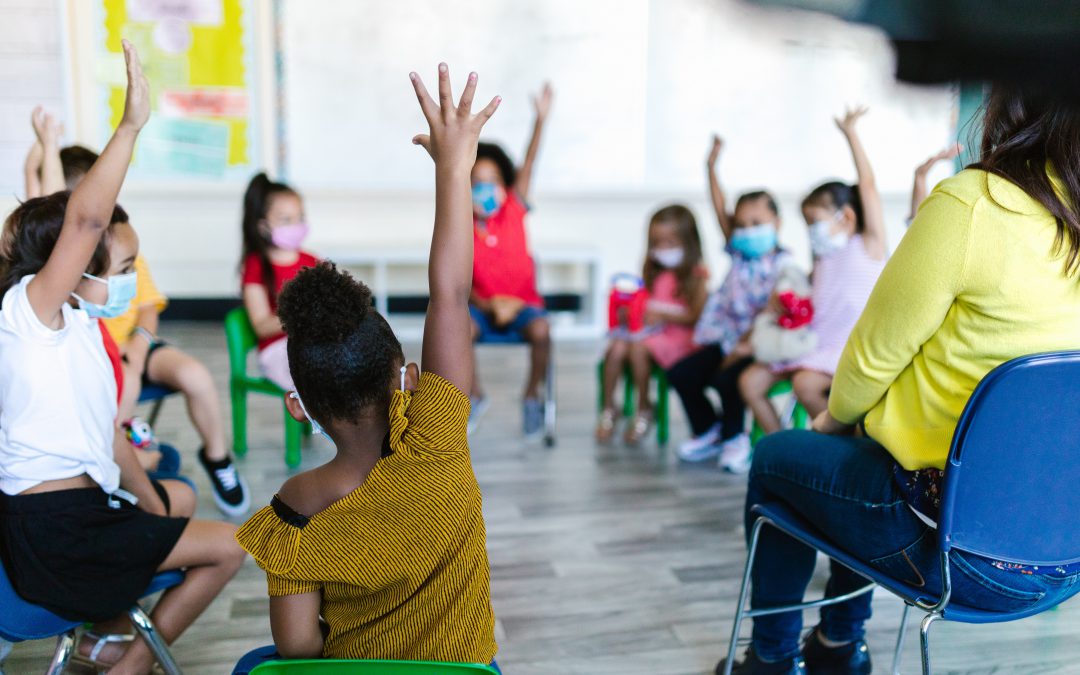In December of 2021, the surgeon general issued an advisory on the mental health crisis facing America’s youth. The surgeon general stated that “an alarming number of young people struggled with feelings of helplessness, depression, and thoughts of suicide — and rates have increased over the past decade.” The pandemic saw dramatic increases in rates of anxiety and depression in students worldwide. In fact, these already-high rates doubled over the pandemic. Now, 20% of young people have symptoms of anxiety; 25% have symptoms of depression. It’s clear that there’s a serious youth mental health crisis. Thankfully, schools can help. The surgeon general’s advisory suggested adopting ways to “empower youth and their families to recognize, manage, and learn from difficult emotions.” Social-Emotional Learning, or SEL, can do just that. Help students develop the coping skills they need with these social-emotional learning resources for the classroom.
How Does Social-Emotional Learning Benefit Students?
Research shows that social-emotional learning can greatly benefit students. The Collaborative for Academic, Social, and Emotional Learning (CASEL) studied the results of adding an SEL program to existing school services. With this addition, they found that 24% more students showed improvements in social behaviors. Moreover, 22% more had fewer conduct issues. But the benefits are not just behavioral. CASEL also found that 27% more students saw academic performance improve by the year’s end.
The Child Mind Institute
The Child Mind Institute is an independent nonprofit organization dedicated to erasing the stigma around mental health. The Institute helps children and families dealing with mental health issues. Also, they research and help with learning disorders that affect student performance. Though the Institute offers clinical care to families on an individual basis, they also seek ways to reach the larger public. To this end, the Institute developed public outreach programs and free resources to transform education.
Social-Emotional Learning Resources for the Classroom from the Child Mind Institute
The Institute’s latest program, The California Healthy Minds, Thriving Kids Project, emphasizes social-emotional learning. In particular, the project focuses on developing coping skills as well as an understanding of mental health. The project consists of a series of videos, available in both English and Spanish, to inspire and normalize conversations about mental health. On the Today show, child psychiatrist and president of the Child Mind Institute, Dr. Harold Koplewicz, explained the project’s intentions. He described the videos as “a way to scale a set of tools and skills that every child needs, whether they have a mental health disorder or they’re mentally healthy.” Dr. Koplewicz added that “We want them to understand their emotions and know how to deal with that.”
And such a project is more necessary now than ever. As Dr. Koplewicz told Today, the COVID pandemic and school closures affected every child’s – and adult’s – mental health. “That doesn’t mean they have a mental health disorder,” Dr. Koplewicz went on to say, “but they are more anxious, they are more depressed.” The thirty videos in the project offer information about mental health as well as ways to strengthen one’s coping and wellness skills. Additionally, downloadable “Skill Sheets” provide teachers and parents with further information and methods for building mental health skills in the classroom and at home.
Edutopia
You may know George Lucas as the creator of the Star Wars saga. Now, he’s using his star power to shine a light on best practices in education. His nonprofit, The George Lucas Education Foundation, studies techniques that lead to student success. One division of the Foundation, Edutopia, shows administrators and educators how to put those best practices into practice. Edutopia offers social-emotional learning resources for all grade levels.
Edutopia’s Social-Emotional Learning Resources for the Classroom
Edutopia’s varied social-emotional learning resources cover everything from pedagogy to mindfulness to pandemic-related stress. For example, one resource describes a SEL-informed approach to classroom management. The article discusses how teachers can create norms with student input rather than imposing arbitrary classroom rules. Another resource describes not only how to help K-12 students develop metacognition skills but also how to use them to think about difficult issues, such as cyberbullying and racism. Other resources help students adjust to pandemic-related changes, such as readjusting to a bustling school environment. Edutopia even offers resources for teachers, such as tips for caring for your own mental health when helping students deal with trauma.
LearnSafe’s Social-Emotional Learning Partner
Because SEL can have such great benefits for students, LearnSafe has partnered with Vivensity to offer imSparked©, a powerful and effective SEL program for adolescents. The imSparked curriculum includes micro-units easily integrated into the larger curriculum. These micro-units follow CASEL guidelines, helping students to regulate their emotions and cope with stress. For more about the imSparked curriculum, check out this introductory video.
LearnSafe: See the Warning Signs. Save Lives.
Social-Emotional Learning can greatly benefit students’ emotional, mental, and academic well-being. However, some students may require more help. Before the pandemic, depression rates among adolescents were already at record highs. In 2019, at least one in three American high schoolers reported that they’d experienced symptoms of depression. That, according to the CDC, was an increase of 40% over the course of ten years. After the pandemic, those rates only increased.
Screen-monitoring software, like LearnSafe, helps schools identify students who may be suffering, which helps them get the help they need. Recently, a LearnSafe Digital Safety Representative reviewed a capture of a student discussing their depression and their intention to self-harm. The Digital Safety Representative alerted school staff. The school safety team then took action to get this student the help they needed. LearnSafe helps schools see the warning signs and protect their most vulnerable students.


